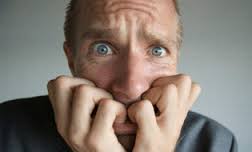With all the violence that is happening in the world today, how do you know what’s safe to do? Should you be flying? Should you be taking the kids to NYC for the holidays? Should you be avoiding crowds at the stadium? Or, at the mall? If your answer is, “no, not now,” how will you know when you are ready to return to “normal” activity?
There is no absolute safety in this world. Indeed, staying home turns out to be a fairly risky business as home is the place where most fatal accidents occur. Thus, the trick to feeling safe is not to hide under a blanket or to bury your head in the sand but to distinguish between how risky a situation actually is and how risky it feels. Risk is less frightening when you understand it better. Hence, here are a few things to keep in mind:
How ris ky we perceive an activity to be is not the same as how risky it actually is. Many people feel more frightened flying than driving. This is true even when they know that one is much more likely to have a fatal accident in a car than in a plane. Logic often does not hold a candle to our emotional responses.
ky we perceive an activity to be is not the same as how risky it actually is. Many people feel more frightened flying than driving. This is true even when they know that one is much more likely to have a fatal accident in a car than in a plane. Logic often does not hold a candle to our emotional responses.
TV images of dreadful events make them more vivid in our imagination. The most recent terror attacks in Paris and in San Bernardino were not something we just heard about. We saw graphic images of destruction on TV, on the Internet, on our phones. Over-exposure to such events makes us feel more vulnerable and open to attack.
We feel more vulnerable when we’re not in control. When we’re not the ones calling the shots, it requires that we put our trust and faith in people we don’t know and in systems we may not trust. This is difficult for many people to do.
New risk seems scarier than old risk. Which is more likely to kill you, the flu or anthrax? No question, it’s the flu. But since the flu is a known disease and anthrax is a new disease born of terrorism, anthrax is perceived to be far more dangerous. Indeed, we are so used to the flu arriving each autumn that many can’t be bothered to get vaccinated, even when there is no financial cost.
 We all need to reflect on our own risk-reward ratio. What risks am I willing to take to live the life I want to live? When am I being overly cautious? There are no right or wrong answers to these questions; you must come to your own conclusion. Yes, there are times in which it is smart to be afraid. But if fear becomes your way of life, it takes a huge toll. Here are just a few of the costs:
We all need to reflect on our own risk-reward ratio. What risks am I willing to take to live the life I want to live? When am I being overly cautious? There are no right or wrong answers to these questions; you must come to your own conclusion. Yes, there are times in which it is smart to be afraid. But if fear becomes your way of life, it takes a huge toll. Here are just a few of the costs:
A fearful lifestyle constricts your thinking.
If you are constantly feeling fearful, you may find that you have developed a pattern of reflexive nay-saying instead of reflective thought. Worrying about setbacks, troubles, problems or calamities that might befall you (or your loved ones) makes it difficult, if not impossible, to sustain good decision making©©.
A fearful lifestyle pinches choices.
Fear also restricts your ability to take action. You may approach life with a ‘better safe than sorry’ attitude. The upshot? You end up spending your days in a too-tight, too-narrow comfort zone.
A fearful lifestyle squeezes all the fun, excitement, and juiciness out of life.
When fear becomes the primary determinant of your life choices, what’s left? Two things: the routine, everyday undertakings of life and the crisis and tragedies of life that sooner or later will befall us.
Though being scared, at times, is an inevitable part of living, focusing on the hazards and risks of life is not. So, next time you’re feeling overwhelmed with world events, be guided not only by the fear in your gut but also by the knowledge in your head.
2020
“To fear is one thing.
To let fear grab you by the tail and swing you around is another.”
Katherine Paterson




